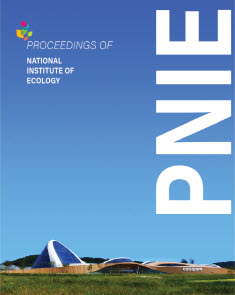Mapping the Potential Distribution of Raccoon Dog Habitats: Spatial Statistics and Optimized Deep Learning Approaches
Mapping the Potential Distribution of Raccoon Dog Habitats: Spatial Statistics and Optimized Deep Learning Approaches
RezaieFatemah(Fatemah Rezaie) (Geoscience Data Center, Korea Institute of Geoscience and Mineral Resources)
LeeSaro(Saro Lee) (Geoscience Data Center, Korea Institute of Geoscience and Mineral Resources)

초록
The conservation of the raccoon dog (Nyctereutes procyonoides) in South Korea requires the protection and preservation of natural habitats while additionally ensuring coexistence with human activities. Applying habitat map modeling techniques provides information regarding the distributional patterns of raccoon dogs and assists in the development of future conservation strategies. The purpose of this study is to generate potential habitat distribution maps for the raccoon dog in South Korea using geospatial technology-based models. These models include the frequency ratio (FR) as a bivariate statistical approach, the group method of data handling (GMDH) as a machine learning algorithm, and convolutional neural network (CNN) and long short-term memory (LSTM) as deep learning algorithms. Moreover, the imperialist competitive algorithm (ICA) is used to fine-tune the hyperparameters of the machine learning and deep learning models. Moreover, there are 14 habitat characteristics used for developing the models: elevation, slope, valley depth, topographic wetness index, terrain roughness index, slope height, surface area, slope length and steepness factor (LS factor), normalized difference vegetation index, normalized difference water index, distance to drainage, distance to roads, drainage density, and morphometric features. The accuracy of prediction is evaluated using the area under the receiver operating characteristic curve. The results indicate comparable performances of all models. However, the CNN demonstrates superior capacity for prediction, achieving accuracies of 76.3% and 75.7% for the training and validation processes, respectively. The maps of potential habitat distribution are generated for five different levels of potentiality: very low, low, moderate, high, and very high.
- keywords
- Convolutional neural network, Frequency ratio, Group method of data handling, Habitat mapping, Long
Abstract
The conservation of the raccoon dog (Nyctereutes procyonoides) in South Korea requires the protection and preservation of natural habitats while additionally ensuring coexistence with human activities. Applying habitat map modeling techniques provides information regarding the distributional patterns of raccoon dogs and assists in the development of future conservation strategies. The purpose of this study is to generate potential habitat distribution maps for the raccoon dog in South Korea using geospatial technology-based models. These models include the frequency ratio (FR) as a bivariate statistical approach, the group method of data handling (GMDH) as a machine learning algorithm, and convolutional neural network (CNN) and long short-term memory (LSTM) as deep learning algorithms. Moreover, the imperialist competitive algorithm (ICA) is used to fine-tune the hyperparameters of the machine learning and deep learning models. Moreover, there are 14 habitat characteristics used for developing the models: elevation, slope, valley depth, topographic wetness index, terrain roughness index, slope height, surface area, slope length and steepness factor (LS factor), normalized difference vegetation index, normalized difference water index, distance to drainage, distance to roads, drainage density, and morphometric features. The accuracy of prediction is evaluated using the area under the receiver operating characteristic curve. The results indicate comparable performances of all models. However, the CNN demonstrates superior capacity for prediction, achieving accuracies of 76.3% and 75.7% for the training and validation processes, respectively. The maps of potential habitat distribution are generated for five different levels of potentiality: very low, low, moderate, high, and very high.
- keywords
- Convolutional neural network, Frequency ratio, Group method of data handling, Habitat mapping, Long
- 투고일Submission Date
- 2023-08-25
- 수정일Revised Date
- 2023-10-23
- 게재확정일Accepted Date
- 2023-10-24
- 다운로드 수
- 조회수
- 0KCI 피인용수
- 0WOS 피인용수
_학술지_디자인_시안_koar_top_300x55.png)

